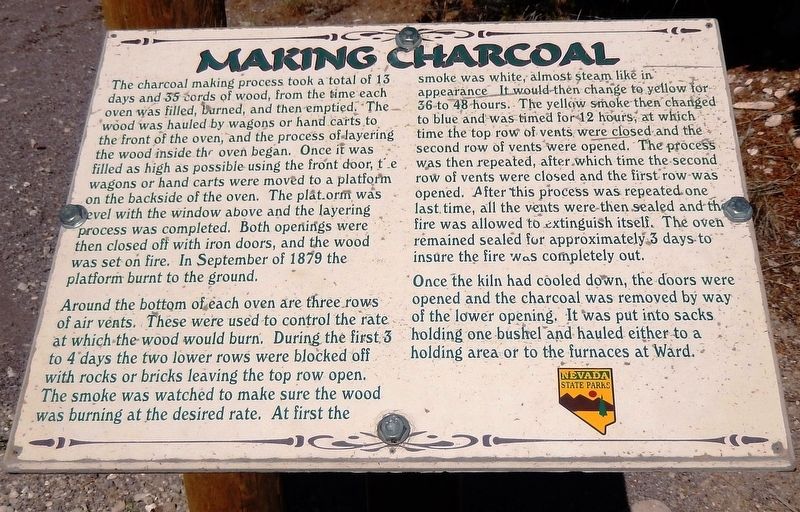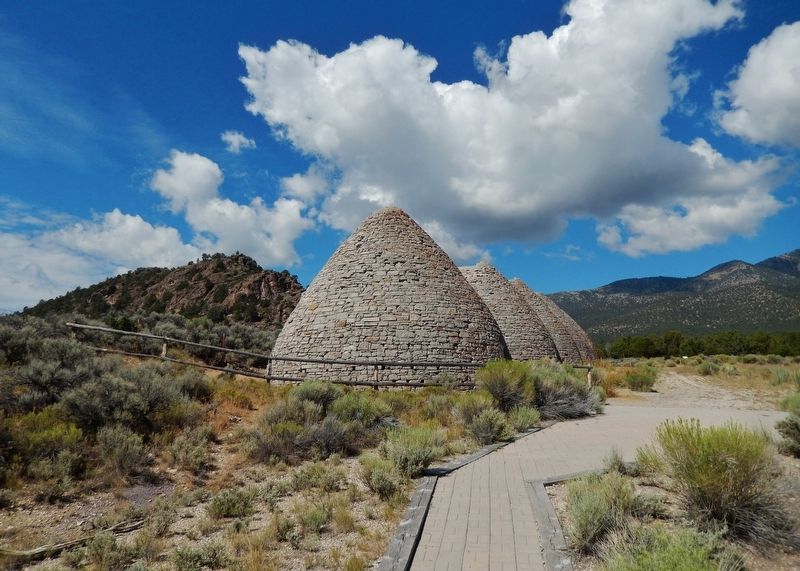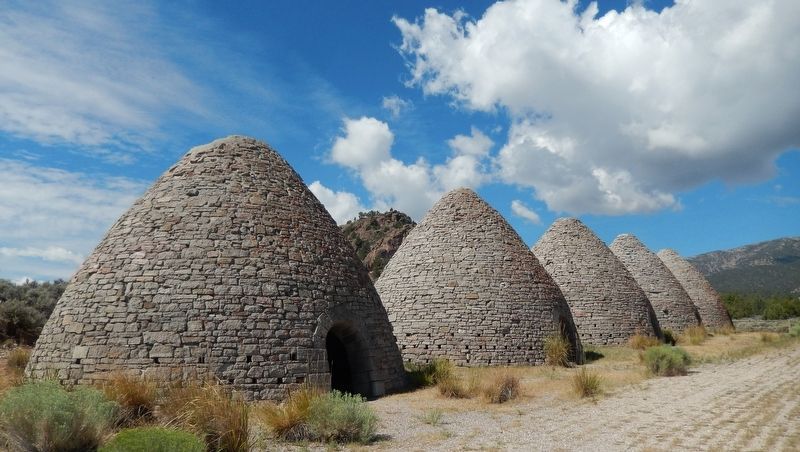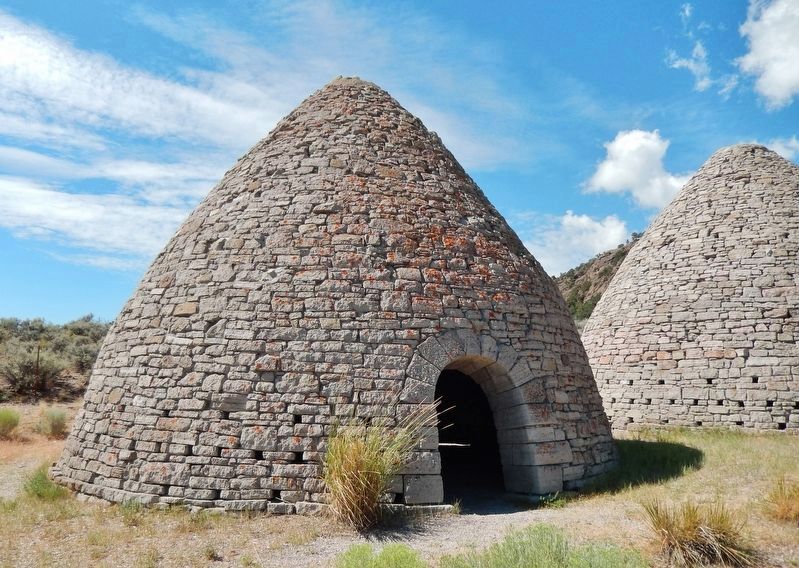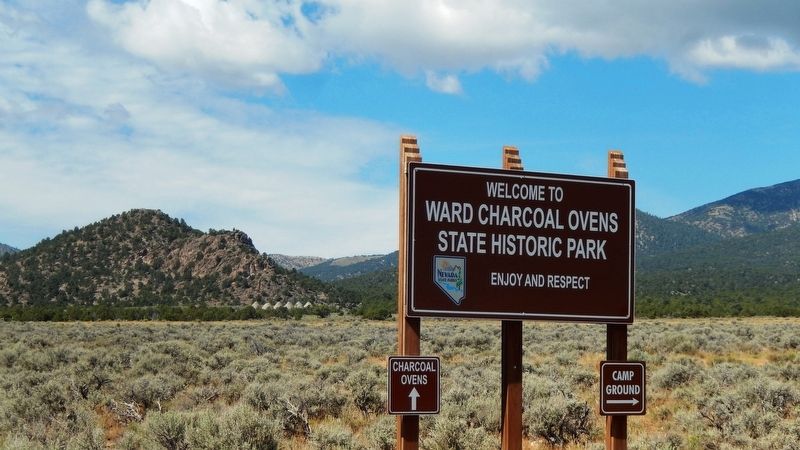Making Charcoal
The charcoal making process took a total of 13 days and 35 cords of wood, from the time each oven was filled, burned, and then emptied. The wood was hauled by wagons or hand carts to the front of the oven, and the process of layering the wood inside the oven began. Once it was filled as high as possible using the front door, the wagons or hand carts were moved to a platform on the backside of the oven. The platform was level with the window above and the layering process was completed. Both openings were then closed off with iron doors, and the wood was set on fire. In September of 1879 the platform burnt to the ground.
Around the bottom of each oven are three rows of air vents. These were used to control the rate at which the wood would burn. During, the first 3 to 4 days the two lower rows were blocked off with rocks or bricks leaving the top row open. The smoke was watched to make sure the wood was burning at the desired rate. At first the smoke was white, almost steam-like in appearance. It would then change to yellow for 36 to 48 hours. The yellow smoke then changed to blue and was timed for 12 hours, at which time the top row of vents were closed and the second row of vents were opened. The process was then repeated, after which time the second row of vents were closed and the first row was opened. After this process
was repeated one last time, all the vents were then sealed and the fire was allowed to extinguish itself. The oven remained sealed for approximately 3 days to insure the fire was completely out.
Once the kiln had cooled down, the doors were opened and the charcoal was removed by way of the lower opening. It was put into sacks holding one bushel and hauled either to holding area or to the furnaces at Ward.
Erected by Nevada State Parks.
Topics. This historical marker is listed in this topic list: Industry & Commerce. A significant historical month for this entry is September 1819.
Location. 39° 2.234′ N, 114° 50.781′ W. Marker is near Ely, Nevada, in White Pine County. Marker can be reached from Cave Valley Road (County Road 45) one mile south of County Road 16 when traveling west. Marker is located near the charcoal ovens trailhead parking lot at Ward Charcoal Ovens State Historic Park. Follow White Pine County Road 16 for 5 miles west from US Highway 50, then Cave Valley Road (White Pine County Road 45) for 1 mile south to the park entrance. The trailhead and parking lot are 4/10 mile west of the park entrance on Cave Valley Road. Touch for map. Marker is in this post office area: Ely NV 89315, United States of America. Touch for directions.
Other nearby markers. At least 6 other markers are within 16 miles of this marker, measured as the crow flies. Ward Charcoal Ovens (within shouting distance of
Related markers. Click here for a list of markers that are related to this marker. Ward Charcoal Ovens
Also see . . . History of Ward Charcoal Ovens State Historic Park. The beehive shaped ovens replaced an older system of producing charcoal because the ovens were a more efficient way to reduce pinyon pine and juniper into charcoal. The Ward Charcoal Ovens operated from 1876 through 1879, the silver boom years of the Ward mines. The ovens were eventually phased out completely due to depleted ore deposits and a shortage of available timber. (Submitted on December 7, 2018, by Cosmos Mariner of Cape Canaveral, Florida.)
Credits. This page was last revised on December 22, 2020. It was originally submitted on December 7, 2018, by Cosmos Mariner of Cape Canaveral, Florida. This page has been viewed 144 times since then and 19 times this year. Photos: 1, 2, 3, 4, 5. submitted on December 7, 2018, by Cosmos Mariner of Cape Canaveral, Florida. • Andrew Ruppenstein was the editor who published this page.
